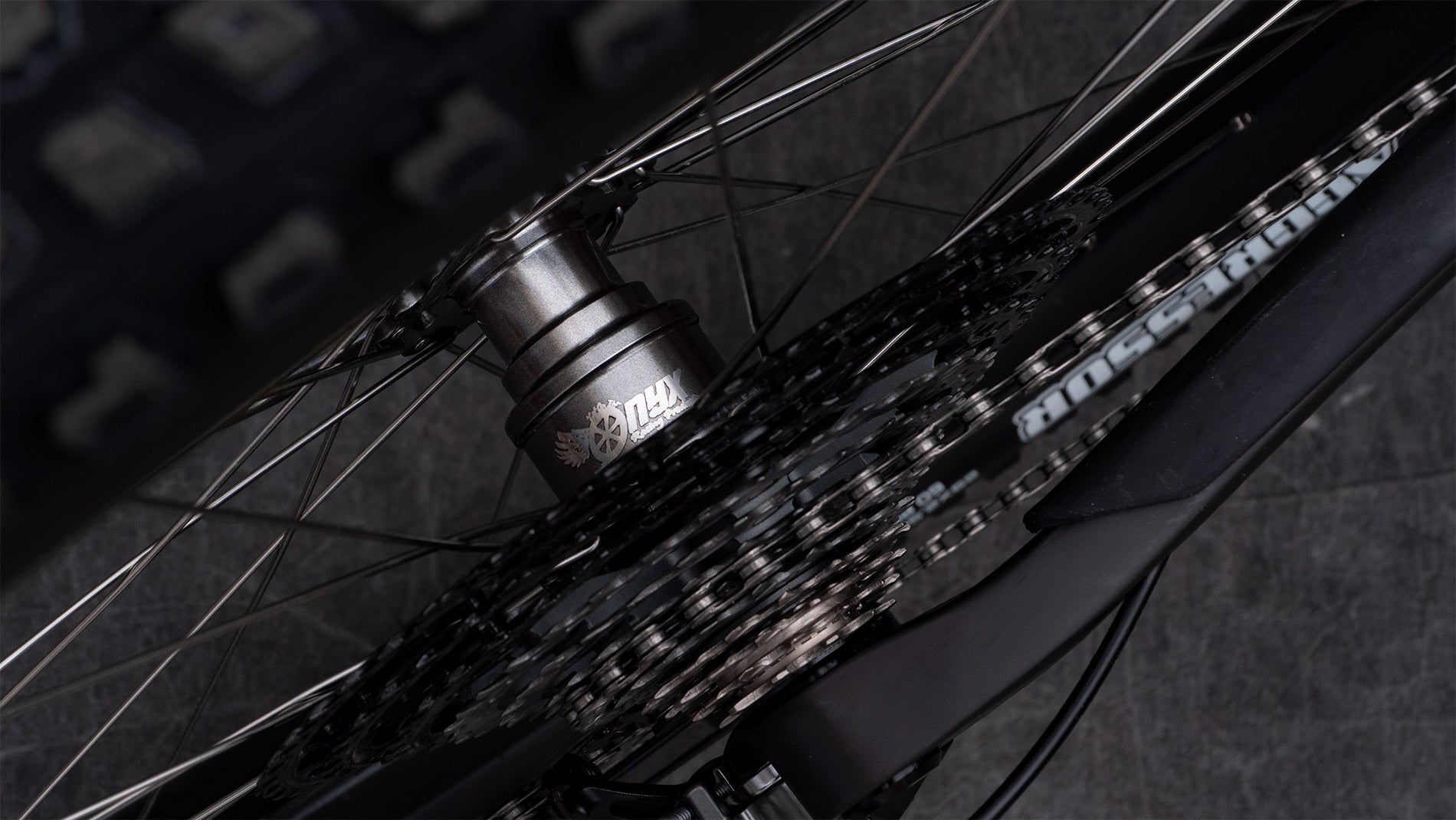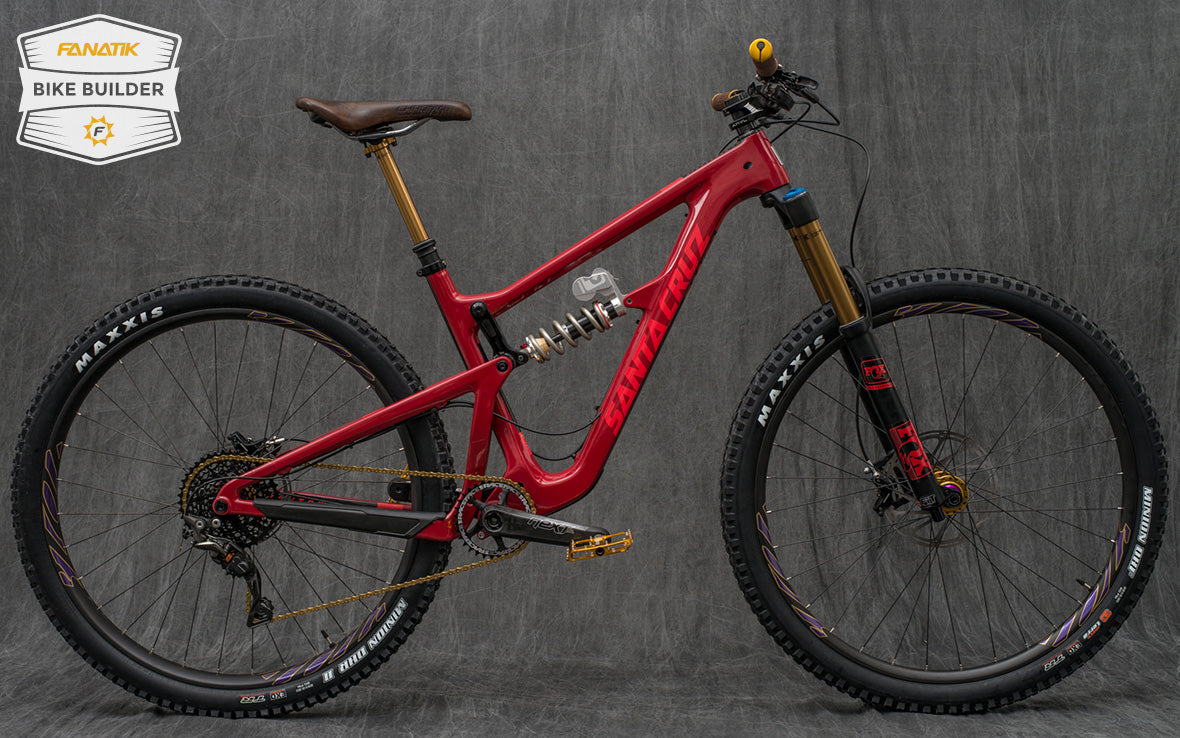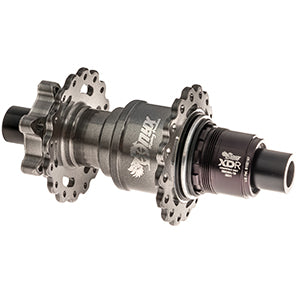Vesper Update
After years of teasing, Onyx has released their updated sprag clutch equipped Vesper hubs. What's the difference? Functionally, only that the Vesper rear hubs weigh 136 grams less, resulting in a total weight of 389 grams (.86lbs) - down from 525 grams (1.16 lbs). Because this is all un-sprung weight (not suspended by your fork and shock, like your body weight is), it dramatically affects how well your suspension performs. The less un-sprung weight the better.
How did they do it? If you compare the Vesper to the first gen Onyx hubs, you'll see that as much material as possible has been removed from the hub shell. The hub flanges now have a cool star profile, and the center of the hub shell is not a static diameter. This is because they have reduced the width of the sprag mechanism itself, another source of weight savings. Lastly, Onyx has redesigned the driver body, which is no longer completely steel.
I’ve spent the last 10 years on hubs of all sorts. From the confoundingly simple ratchet drive of the DT 350, to the pinnacle of pawl systems on the Industry Nine Hydra, I’ve ridden the whole gamut. While many hubs have wowed me with their intricate, almost watch-like inner workings, I’ve never encountered a situation where a hub’s performance was the most astonishing part of a bike, much less a bike like my Santa Cruz Hightower, which is about as Gucci as I could make it.
The Onyx hubs have proven to be be just that, a hub that is so dramatically different than anything else out there that (with the exception of the Push Elevensix), they have overshadowed everything else on my ride. Side-note, if you'd rather watch our video review, head to our YouTube channel.
BMX Roots
Onyx Racing Products was born when a young Minnesota boy became involved in BMX racing. His father had long time experience in machining through his involvement in his family’s farm equipment manufacturing company, Christianson Systems. Not being one to settle, he started to tinker with with his son’s bike. The father, Jim Gerhardt, felt that he could design a hub that had far less drag than other options on the market and set out to do so. The search ended when he found and adopted a sprag clutch, often used in automotive and industrial applications, for use in bicycles. This effort has evolved into a full fledged line of bicycle hubs, from road, to mountain, and even fat bikes (a more common sight in snowy Minnesota than out here in the PNW).
At the heart of Onyx’s hubs lies the aforementioned sprag clutch, which is the mechanism that allows these hubs to roll with extremely low drag, make no noise at all, and engage instantaneously. This is in contrast to the most commonly used engagement system, which employs pawls like those shown below, and produces drag that is most easily discerned as a loud clicking noise. It is worth noting that with a pawl system, there is a direct relationship between engagement and drag; higher engagement creates more drag.
A sprag clutch is essentially a one way bearing that uses a number of small cams, placed in series, between two races. Apply torque by pedaling, and they rotate very slightly, locking against the races. Stop pedalling, and they slip, allowing the wheel to spin freely with almost no resistance.
This all happens in a space of time so short that it feels instantaneous, and results in a system that has very little drag when compared to any other hub design.
Who cares?
Why does fast engagement and low drag matter, especially when they come at a price point above many other hubs out there? The benefits are particularly obvious in the sport that these hubs originated in, BMX racing. Being able to lay down power right out of the gate and retain as much momentum as possible when coasting are particularly beneficial to someone who is pumping and scrubing their way around a track. That being said, the benefits do translate to mountain biking in several ways.

During technical climbing, it is important to be able to react with quick little pedal kicks to get up and over roots and rocks. Having every ounce of force from your pedal kicks turn into forward momentum is hugely beneficial in these situations. When descending, and especially in race settings (against the clock or against your buddies), laying into the pedals out of corners helps you to quickly regain any forward motion you lost from overusing your brakes. I mentioned earlier that fast engagement can be accomplished with a traditional pawl system, but that as engagement increased, so did drag. With Onyx’s sprag clutch, drag is limited to a bare minimum. In an effort to produce the best product he could, Jim also elected to ship every single one of his hubs with ceramic hybrid bearings. These differ from normal sealed bearings in that they use ball bearings made of silicone nitride (a type of ceramic), which have a multitude of advantages over steel ball bearings. They are less dense and therefore lighter, but also significantly harder, smoother, and stiffer. Ceramic bearings also have a lower thermal expansion coefficient, which means they hold up better when things get hot (a result of inevitable friction between bearings and their races).
When the Electric Vehicle Team at Duke University wanted to determine which hubs to use on their electric vehicles, for which efficiency is key, they did a study. In this study, they compared a number of the most popular bicycle hubs available, including those from Hope, DT Swiss, Chris King, and Profile Racing. What they found was that Onyx’s hubs had a significantly lower rate of deceleration (ie. negative acceleration) than any of the other hubs.

From a study done by the Duke University Electric Vehicle Team titled "Velocity Decay in Wheels," Feb 2016.
My final point about these hubs is their complete lack of sound. A seemingly obvious but unanticipated consequence of this is they don’t create any vibration when you are coasting. Riding these hubs on the trail results in a very neat sensory experience that is hard to describe. The only feedback you feel coming through your hands and feet is that which makes it’s way through the tires and suspension. There is no built in vibration, always there, reminding you that you aren’t pedaling. It’s really an experience that you have to feel to understand. So, we have instantaneous engagement, best in class drag (or lack thereof), made in USA, insane opportunity for customization, and for those who care, no sound at all. What is there not to like? Well, you could quote the price, but that is a gripe that has no place here given the precision engineered piece of equipment we are talking about.
The only complaint I have is the elephant in the room, and, well, it’s that the rear hub weighs almost as much as said elephant. A 12x148 Boost XD hub made by Onyx RP weighs 420 grams (and that is with their lighter, alloy driver), whereas the similarly priced DT Swiss 240s rear hub in the same configuration weighs in at 232 grams. Almost half a pound is not chump change, especially since it is all un-sprung weight. Some folks will talk your ear off about un-sprung vs. sprung weight, and I don’t deny that they have a point. I will say I wasn’t able to notice a difference when I swapped my Onyx equipped rear wheel to one that ran a Hope Pro 4 hub (116 grams lighter).
Why do we like them?
To re-cap, we love Onyx’s rear hub. It is a wonderful piece of engineering, made right here in the USA. It works extremely well, it’s entirely unique, and is very easily serviced by the home mechanic. It is also available in about any configuration you could dream of, and in an enormous number of colors.
At $445 for a rear hub it certainly isn’t cheap, but it’s also not more expensive than other high end bicycle hubs. Jim has also made it a priority to provide a product that will stand the test of time. For example, note the steel inserts on their alloy HG freehub, that keep your cassette cogs from eating into the splines.

Onyx uses steel inserts in their alloy Shimano freehub so that your cassette doesn't eat into the lighter metal
Speaking of Jim, you can find him answering in-depth questions from people like you and I in MTBR’s forums. This culture of customer service can be felt throughout the company, from the easily accessible service videos mentioned above to the quick and comprehensive answers you’ll receive when contacting them.
In summary, picking the right hub for your wheelset comes down to making compromises based on a handful of variables. If low weight, high-engagement, insane stiffness, and all around pizazz are your jam, take a look at the custom, US made Industry Nine Straight Pull wheels we’ve been creating, and read about them here.
If you want extremely low weight, very little noise, and incredible ease of maintenance, the DT Swiss 240s (or the 350 for those on a budget) are exemplary hubs that also use a unique engagement mechanism, mind boggling in its simplicity. But if you don’t want to feel like you are being followed around by a pack of anodized bees, or aren’t into the drab looks of DT’s hubs, Onyx is hard to beat. You’ll be making a concession on weight, but in my case, that is a concession I’m willing to make. Especially when I can have purple widgets on my gold hubs!
Happy trails! - Dan at Fanatik
Check out some of our custom Onyx builds
More Articles You Might Like
RockShox Lyrik Ultimate Review // RockShox Charger 3 Compared to Charger 3.1
Product Reviews / BK Stancil / Sep 11, 2024
The Charger 3.1 isn’t a complete overhaul but rather the...
Read MoreTransition Sentinel Bike Check // Transition Bike Rentals Now at Fanatik
Bike Checks / BK Stancil / Aug 08, 2024
When he’s not working tirelessly to keep our website or ...
Read MoreHow to Assemble a Mountain Bike // Fanatik Custom Build Assembly Guide
How To / BK Stancil / Jul 31, 2024
Read MoreView More:










































































































